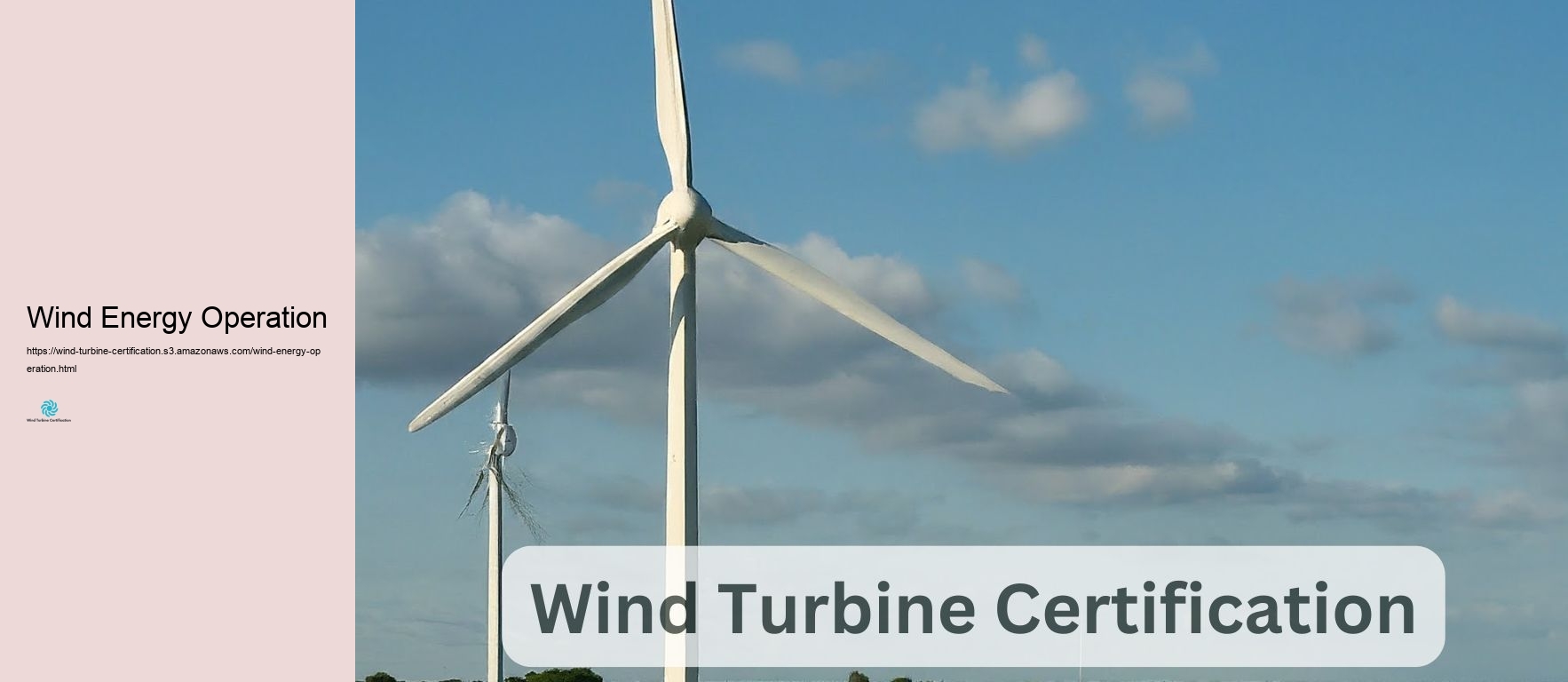

Wind turbine certification is an essential procedure in the wind power market that sees to it wind turbines meet particular requirements for security, efficiency, and stability. This comprehensive certification treatment consists of extensive testing and analysis of wind turbine styles, components, and producing processes to validate conformity with international demands and standards. The key objective of wind turbine certification is to supply assurance to stakeholders, containing task programmers, capitalists, and regulative bodies, that a particular wind turbine design appropriates for its assigned use and can withstand the environmental conditions it will absolutely experience throughout its operational lifetime. Certification assists in minimizing threats associated with wind energy jobs and advertises the overall high quality and stability of wind turbine contemporary technology. There are many kinds of wind turbine certifications, with type certification being one of the most typical and thorough. Type certification validates that a particular wind turbine style is established, made, and checked according to essential standards and criteria. This process generally consists of numerous evaluation elements, such as design basis analysis, wind turbine design evaluation, kind evaluating, manufacturing examination, and last evaluation. The layout basis exam checks out the environmental and useful conditions under which the wind turbine is expected to run. This consists of variables such as wind rates, disturbance, temperature level arrays, and different other site-specific issues. The wind turbine layout assessment takes a look at the turbine's structural, mechanical, and electrical elements to warranty they meet the required criteria and can withstand the anticipated great deals and stress and anxiety and stress and anxieties. Kind screening is an important component of the certification treatment, including physical assessments on a model or manufacturing system of the wind turbine. These evaluations evaluate various facets of the turbine's efficiency, consisting of power result, sound wears down, and security functions. Loads dimensions are additionally carried out to confirm the precision of the style estimates and simulations. The producing assessment makes sure that the making processes and quality assurance actions suffice to regularly produce wind generators that satisfy the accredited layout specs. This might include producing center examinations and audits of the maker high quality administration system. Along with kind certification, element certification is in addition conveniently available for substantial wind turbine components such as blades, gearboxes, and generators. Element certification follow a similar procedure to kind certification yet concentrates on particular parts rather than the whole turbine system. For small wind generators, which are commonly utilized in dispersed generation applications, certification processes might be somewhat different yet still objective to validate performance, security, and strength. Little wind turbine certification commonly involves screening to information requirements established for smaller systems, such as those defined by the International Electrotechnical Payment(IEC)or nationwide requirements organizations. Wind ranch certification is one more crucial element of the wind power sector, particularly for massive tasks. This procedure reviews the entire wind farm, consisting of the site problems, turbine stability for the details location, help structures, and electric systems. Wind farm certification assists guarantee that the project simultaneously satisfies safety and security and safety and effectiveness demands and can be particularly crucial for overseas wind ranches, which handle distinct challenges as a result of their marine atmosphere. Certification bodies play a vital function in the wind turbine certification procedure. These firms are frequently certified by across the country or worldwide authorities to do certification tasks. Well-known certification bodies in the wind power sector consist of DNV GL, TÜV SÜD, and ClassNK, among others. These business use experts in various areas pertaining to wind power development to carry out detailed assessments and tests. The needs taken advantage of for wind turbine certification are mostly established by worldwide organizations such as the International Electrotechnical Payment (IEC)and the International Organization for Standardization(ISO).
maintaining the development and stability of wind power as an important aspect of the worldwide renewable resource mix. By giving a standardized framework for reviewing wind turbine contemporary innovation, certification helps construct confidence amongst stakeholders and adds to the total success and sustainability of wind energy tasks worldwide.
Acquiring wind turbine certification is a strenuous procedure made to make certain that wind turbines satisfy details requirements and guidelines, ensuring their safety and security, effectiveness, and stability. This extensive review information the essential needs for obtaining wind turbine certification, highlighting the value of each action in the treatment. Kind certification is a vital need for wind wind turbines, validating that they are made, produced, and evaluated to follow specific standards or guidelines. This part reviews the style presumptions and standards used in developing the wind turbine. It ensures that the style is based upon audio design concepts and meets the required requirements. This action testimonials the comprehensive style of the wind turbine, including its mechanical, electrical, and control systems. It confirms that the style satisfies the technical needs and market demands. Type testing consists of executing physical evaluations on the wind turbine to validate its effectiveness and safety and security under different operating problems. This consists of testing for architectural integrity, electric performance, and sound levels. This component analyzes the manufacturing process to see to it that it abides by the approved design papers. It consists of examinations of the production facility and quality control procedures. The final examination combines all previous analyses to verify that the wind turbine satisfies all certification needs. This phase includes a thorough testimonial of all documents and examination outcomes. Optional evaluation modules might consist of structure layout analysis, structure making assessment, and kind qualities measurements. These additional evaluations provide added assurance of the turbine's performance and safety and security. Component certification is similarly crucial, as it validates that significant components of a wind turbine, such as blades or primary gearboxes, please details needs and technological demands. Occupational Safety and Health Administration (OSHA) The procedure for component certification. Turbine certification frequently abides by international standards such as IEC 61400-22 and IEC 61400-1. These standards supply a structure for making sure that wind generators are created and examined to satisfy global safety and performance needs. Conformity with these criteria is crucial for getting certification and ensuring market acceptance. Certification bodies need to be accredited by determined accreditation bodies like DAkkS. This certification makes sure that the certification process is transparent, expert, and adheres to worldwide demands. Transparency in the certification procedure is essential for maintaining depend upon among stakeholders, including manufacturers, plutocrats, and customers. To take care of prices properly, certification bodies provide responses documents that overview manufacturers via the whole treatment. These records aid determine feasible issues in advance, preserving time and sources by remaining free from pricey revamp or redesigns. Clear communication and defined checkpoints make sure that the certification procedure continues to be trustworthy and cost effective. For wind cattle ranch certification, analyzing environmental conditions at the proposed setup site is necessary. This evaluation assesses whether the durability and safety of the wind generators and their assistance structures appropriate for the installment establishing. This action makes certain that wind generators can stand up to local weather condition and various other ecological factors.Thorough files is a crucial demand throughout the certification procedure. Distributors has to offer thorough design records, test records, and production records. Certification bodies analyze these documents to make sure conformity with standards and criteria. Proper paperwork aids boost the certification process and reduces the threat of hold-ups or non-compliance problems. Efficient interaction in between producers and certification bodies is vital. Certification experts need to be easily available for instant help, providing clear answers to inquiries and addressing any type of fears without delay. This degree of solution ensures that distributors can navigate the complex certification treatment successfully, lessening delays and misconceptions. Quickened time-to-market is a significant advantage of obtaining wind turbine certification. By enhancing the certification procedure with clear checkpoints and efficient interaction, suppliers can bring their items to market faster. This lowers packed danger in product growth and offers a competitive advantage over traditional certification approaches [Obtaining wind turbine certification consists of a collection of rigorous evaluations created to make sure security and protection, performance, and reliability. From kind certification to component certification, adherence to international requirements, accreditation visibility, price control activities, ecological trouble evaluations, comprehensive documents demands, customer assistance interaction, and time-to-market advantages all play essential functions in this procedure. By understanding these vital needs, manufacturers can surf the certification procedure correctly, inevitably creating top-notch wind generators that meet worldwide requirements and market needs.
Empower your wind energy projects with certified wind turbines! 🌍💨 Our comprehensive certification ensures top-notch safety, performance, and reliability, helping you build a sustainable future with confidence.https://t.co/Xa7LZ7nRLC
— Turbine Training And Operation (@turbinetraine) August 20, 2024
Wind turbine certification plays a vital feature in the renewable resource industry, offering warranty of protection, effectiveness, and honesty for wind energy jobs worldwide. As the worldwide demand for tidy power remains to grow, certification has actually happened a vital procedure that earnings manufacturers, programmers, investors, and customers alike. At its core, wind turbine certification is a comprehensive evaluation procedure that validates that a turbine variation satisfies information criteria and demands. This treatment generally includes layout evaluation, type testing, generating analysis, and final examination. By obtaining certification, wind turbine suppliers demonstrate that their products have undertaken extensive testing and stick to international criteria, such as those well-known by the International Electrotechnical Settlement (IEC). Among the key benefits of wind turbine certification is the enhancement of security. Certified wind turbines have actually been completely examined for architectural security, electrical systems, and control devices, ensuring that they can stand up against many eco-friendly conditions and operate safely throughout their lifespan. This focus on safety and security not only guards workers and close by neighborhoods yet likewise aids to build public count on wind power innovation. Certification likewise plays a critical task in performance confirmation. Via conventional testing therapies, certified generators supply dependable information on power result, efficiency, and power producing. This info is crucial for job designers and plutocrats, allowing them to make informed choices and accurate estimates relating to the economic functionality of wind power jobs. Wind Energy Grid Integration Licensed efficiency information furthermore help in guarding funding, as loan provider and sponsors have higher confidence in the reliability of licensed generators. For makers, certification provides an affordable benefit in the international sector. As the wind power sector comes to be gradually worldwide, having really recognized products enables makers to go into brand-new markets a lot more quickly. Many countries and locations need certification as a prerequisite for turbine installation or to receive incentives and aids. By acquiring certification, manufacturers program their dedication to top-notch and compliance with global requirements, which can be a considerable take into consideration winning contracts and increasing market share. The certification procedure furthermore drives modern technology and constant improvement in wind turbine contemporary innovation. As manufacturers job to satisfy and go beyond certification demands, they frequently develop new modern technologies and improve existing styles. This recurring advancement produces extra reliable, dependable, and cost-efficient wind generators, eventually making money the entire renewable energy industry. Certification contributes to the basic dependability and durability of wind power tasks. Certified generators have really embarked on detailed evaluating for durability and efficiency under different conditions, which corresponds to reduced downtime and maintenance expenditures over the life of the task. This raised dependability is specifically vital for offshore wind cattle ranches, where fixing and maintenance can be hard and costly. From an ecological point of view, wind turbine certification help warranty that renewable resource tasks are truly lasting. Certified generators are assessed for their ecological influence, including audio discharges and impacts on wild pets. This evaluation helps in mitigating possible undesirable effects and advertises accountable development of wind energy resources. For task programmers and vehicle drivers, certification streamlines the procedure of turbine option and task prep work. The standard approach to certification implies that developers can much more conveniently contrast various turbine layouts and make informed choices based on validated data. This enhances the improvement treatment and reductions the risk of choosing underperforming or unacceptable generators for details task sites. Sponsors and financial institutions furthermore earnings significantly from wind turbine certification. The certification procedure materials a level of due persistance that aids in minimizing economic investment risk. Accredited generators are more than likely to execute as anticipated, which increases the possibility of tasks conference their monetary targets. This lowered danger can produce a whole lot more favorable funding terms and enhanced investor self-confidence in wind energy work. Certification similarly plays a role in regulatory conformity and policy growth. Lots of governments and regulative bodies count on certification requirements when developing plans and motivations for renewable energy. By aligning with these demands, the wind power market can more effectively engage with policymakers and supporter for motivating governing structures. The importance of certification reaches the international effort to battle environment change. As nations strive to satisfy their renewable energy targets and reduce carbon discharges, the integrity and effectiveness of wind generators come to be progressively critical. Accredited wind generators contribute to the integrity of wind power as a viable and lasting alternative to nonrenewable fuel sources, supporting the much more comprehensive adjustment to neat energy resources. In the context of grid assimilation, accredited wind generators are far better provided to please the stiff needs of modern power systems. Certification often includes evaluation of a turbine's grid compatibility, ensuring that it can operate sympathetically with existing electric structure and add to grid stability. As the wind power market continues to advance, certification requirements are furthermore adapting to take care of brand-new problems and modern technologies. As an example, the growth of larger, a lot more effective turbines for offshore applications has brought about the growth of brand-new certification approaches information to these cutting-edge designs. This repeating development of certification requirements ensures that the procedure remains to be pertinent and continues to drive industry progression. Wind turbine certification is a foundation of the renewable energy market, providing a framework for safety, stability, and performance verification. It earnings all stakeholders in the wind power area, from manufacturers and designers to investors and end-users. As the global demand for clean power remains to expand, the relevance of certification in making certain the top-notch, safety and security, and efficiency of wind generators can not be exaggerated. By advertising standardization, driving development, and structure confidence in wind power technology, certification plays a vital function in speeding up the adjustment to a lasting power future.
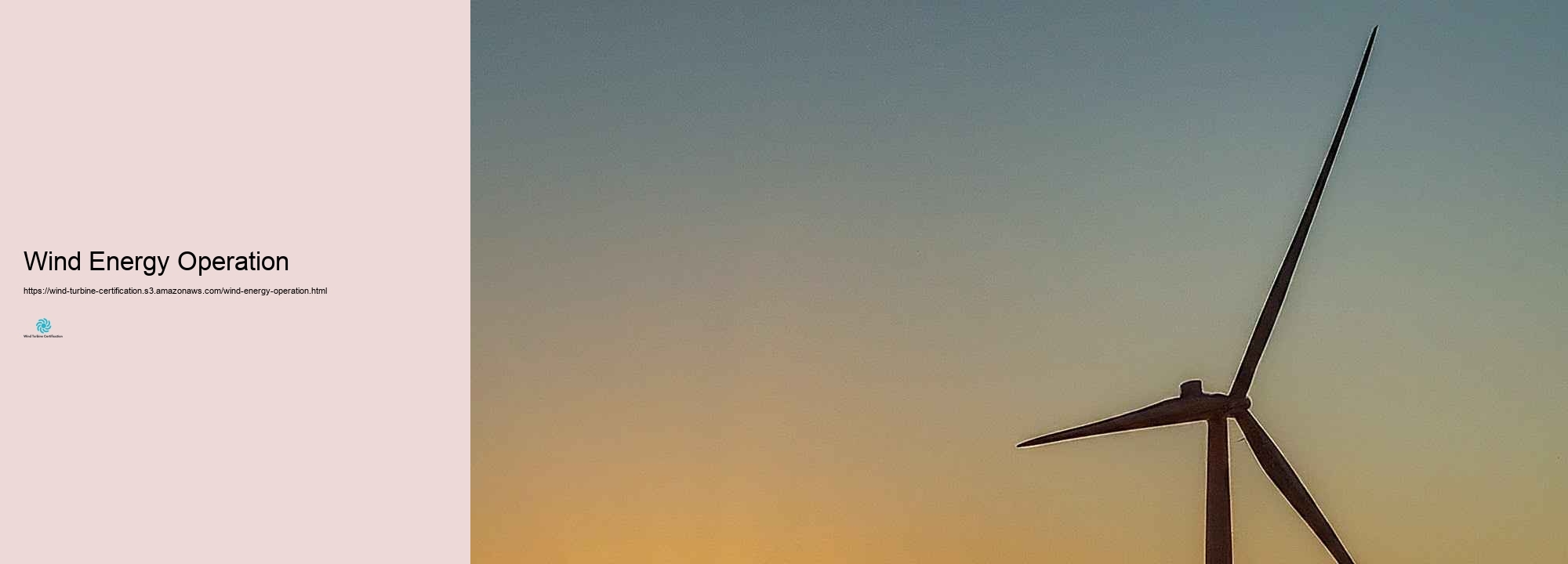
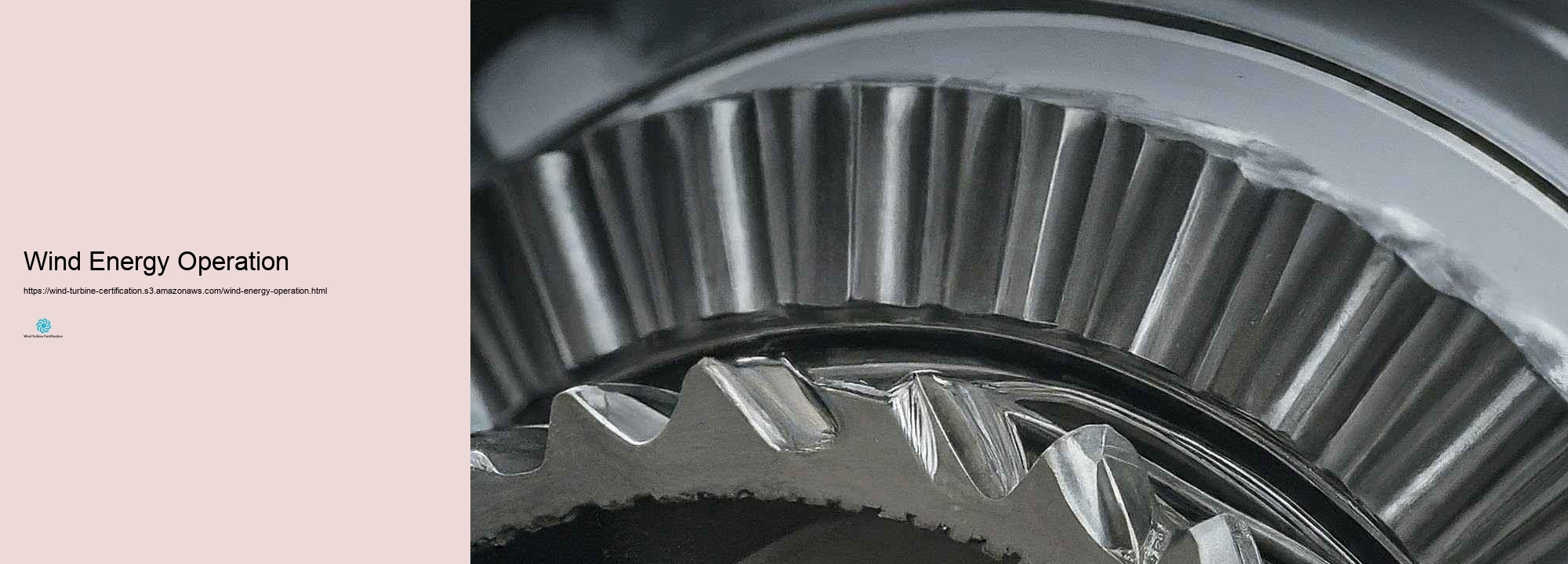
Wind turbine certification is a comprehensive procedure that assurances wind turbines are produced, generated, and checked to meet information requirements and requirements. This certification is essential for makers to show the high quality, safety, and performance of their products. The procedure typically includes a variety of crucial activities, each playing a vital obligation in the overall certification. The main action in the wind turbine certification process is the style basis exam. This initial phase entails analyzing the important presumptions, requirements, and methodologies taken advantage of in the turbine'' ' ' s format. Certification bodies like TUV, DNV-GL, or Bureau Veritas take a look at the layout basis to assurance it straightens with sector criteria such as IEC 61400-22. This action is vital as it develops the foundation for all being successful analyses and tests. Complying with the layout basis examination, the complying with action is the style assessment. In this phase, the certification body confirms that the real design of the wind turbine stay with the accredited layout basis. This involves a full analysis of all technological aspects of the turbine, consisting of building components, electrical systems, control systems, and protection features. The design evaluation ensures that the turbine is in theory reliable in standing up versus the anticipated whole lots and operating problems throughout its designated life time. The producing analysis is the 3rd significant step in the certification procedure. This phase concentrates on assessing the quality control systems and generating processes made use of to create the wind turbine. Certification bodies conduct assessments of creating centers and assess quality administration systems to make certain that the turbines are being produced regularly and according to the qualified style. This action is necessary for preserving the security of the turbine from design to producing. Type screening is possibly one of the most arduous and recognizable component of the certification process. This activity involves a collection of area and research laboratory examinations to confirm the turbine's efficiency, safety and security, and dependability. Trick examinations contain power efficiency measurements, lots measurements, blade exams, and acoustic sound evaluations. These assessments are performed on a design of the wind turbine design under certification. The outcomes of these examinations are essential in confirming the design evaluations and making certain that the turbine does as anticipated under numerous running conditions. Part certification can be an additional action in the process, particularly for necessary components like gearboxes, blades, or generators. This involves different screening and certification of these elements, which can be specifically important for huge or detailed turbine layouts. Component certification can aid improve the complete turbine certification procedure and offer added assurance of reliability. The last evaluation is the end result of all previous actions. In this stage, the certification body examines all the information, test outcomes, and assessments from the earlier phases. They check out whether all needs have been satisfied and if any concerns recognized throughout the treatment have'' been properly ' taken care of. If every little thing is adequate, the certification body troubles the final kind certification for the wind turbine variation. It's vital to note that certification doesn ' ' t end with the issuance of the kind certification. Several certification plans include setups for regular keeping track of and re-certification. This ensures that the made generators remain to please the licensed style and high quality requirements with time. Suppliers may need to embark on normal audits and perhaps included testing to preserve their certification. For wind farm tasks, there's generally an added activity of task certification. This involves evaluating precisely just how the accredited turbine variations will definitely perform in the certain problems of a ready wind cattle ranch site. Job certification considers elements like regional wind problems, surface, grid link requirements, and foundation layouts. Throughout the certification procedure, clear communication in between the turbine manufacturer and the certification body is important. Regular meetings and development reviews help assurance that any type of problems are recognized and settled swiftly, avoiding hold-ups in the certification timeline. Producers require to be prepared to give substantial documents at each phase of the procedure. The timeline for wind turbine certification can differ significantly depending upon the ins and out of the turbine style, the readiness of the maker, and the information certification plan being adhered to. It's not uncommon for the whole process to take 12-18 months or perhaps longer for brand-new or complex layouts. Costs pertaining to certification can be substantial, including charges for the certification body, rates of model. design manufacturing for screening, and expenses linked to the various examinations and assessments. Nonetheless, these prices are usually thought about as a needed monetary investment in the wind energy sector, as certification is usually a requirement for market entrance, task financing, and insurance policy coverage. It's worth noting that numerous markets might have specific certification needs. While global criteria like IEC 61400-22 are thoroughly acknowledged, some countries or areas may have added or changed needs. Manufacturers going for around the world markets need to be knowledgeable about these variations and may demand to get numerous certifications. The certification procedure similarly plays a crucial function in the continual improvement of wind turbine technology. The considerable testing and examination frequently bring about understandings that drive improvement and boost turbine performance and dependability. This cycle of certification and renovation has been a crucial consider the quick development of wind energy contemporary innovation over the previous years. The wind turbine certification treatment is a considerable, multi-step journey that makes certain wind generators meet high criteria of safety, performance, and dependability. From initial layout evaluation with to last kind evaluating and certification, each step plays a crucial function in validating the turbine's capacities.
While the treatment can be lengthy and costly, it gives vital warranty to stakeholders in the wind power market, from makers and programmers to capitalists and regulatory authorities. As wind power continues to play a progressively important obligation in the international energy mix, the substantial certification procedure stays a keystone of the market development and success.
When it pertains to wind turbine specialist qualifications, several trusted organizations provide programs that are thoroughly identified in the field. These certification bodies play an important duty in establishing and protecting requirements for wind turbine professionals, ensuring they have the needed capacities and competence to function securely and effectively in this swiftly expanding area. Amongst the most noticeable certification bodies is the American Wind Power Organization (AWEA). The AWEA usages an extensive Wind Turbine Service technician Certification program that is highly pertained to in the market. This certification covers a substantial range of topics, consisting of safety and security and security treatments, electric systems, mechanical systems, and hydraulics. The AWEA certification procedure generally consists of completing a training program and passing an exhausting assessment. Various companies in the wind power market favor or need solution professionals to hold this certification, making it a beneficial credential for line of work renovation. One more well-respected certification body is the Worldwide Wind Organisation (GWO).
requirements of their target business or locations. By obtaining certifications from trusted bodies and devoting to ongoing education and learning and learning and ability development, wind turbine professionals can location themselves for success in this dynamic and expanding market.
Wind Energy Operation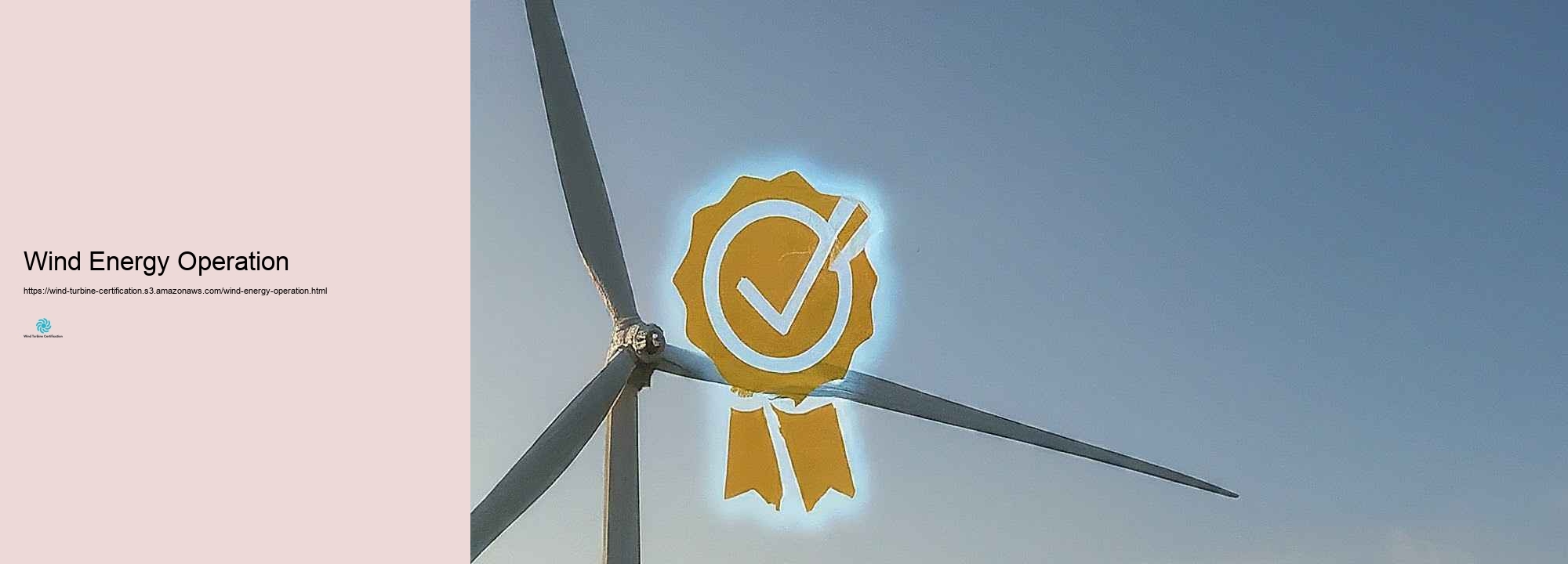
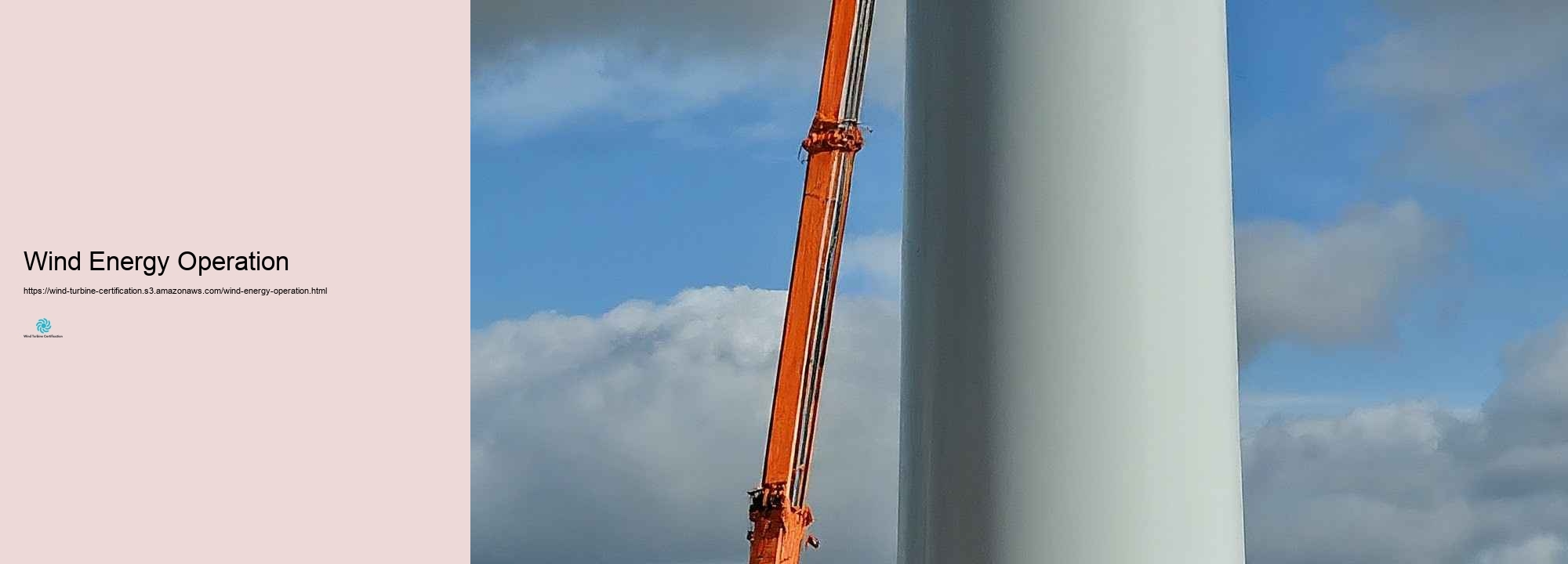
Wind turbine certification plays an important feature in making sure the safety and compliance of wind power systems, adding significantly to the market growth and public acceptance.
The wind power market has in fact grown substantially over the previous couple of years, driven by the improving need for renewable resource sources. As the industry expands, the importance of ensuring security, honesty, and performance of wind turbines has happened essential. Global certification bodies play an important role in this procedure by establishing and imposing requirements that assure the top quality and safety and security and protection of wind turbines. This write-up uncovers the crucial international certification bodies connected with the wind power field and their tasks in ensuring consistency with around the world demands. The Global Wind Organisation (GWO) is a non-profit field organization started by leading wind turbine makers and motorists. GWO's primary goal is to accomplish an injury-free work environment in the wind turbine market with the implementation of typical worldwide criteria for safety training and emergency situation treatments. GWO requirements are produced by the sector, for the sector, ensuring that they are reasonable and efficient in improving safety and security and maintaining workforce innovation. GWO offers numerous training requirements, consisting of Essential Security Training( BST), Requirement Technical Training(BTT), and Advanced Rescue Training(ART ). Wind Energy Operation These criteria are made to guarantee that wind turbine specialists have the essential skills and expertise to do their jobs safely and effectively. Certification bodies like NSF International Strategic Registrations (NSF-ISR) and ClassNK deal GWO certification to training service providers, ensuring that they please the required criteria and utilize perfect devices in an appropriate atmosphere. UL Solutions is another renowned certification body in the wind power industry, acknowledged around the world for its proficiency in safety and security clinical study. UL Solutions provides certifications for offshore floating wind generators, which are becoming increasingly critical as the market moves in the direction of much deeper waters. Their certification solutions contain kind certification, component certification, and grid code compliance certification. These credentials verify that wind generators are developed, recorded, and made in consistency with certain requirements and site troubles, ensuring safety and safety, integrity, and performance. UL Solutions furthermore materials turbine life extension services, helping owners make educated selections about procedures, upkeep, and fixing to make finest use the worth of running wind possessions. Their involvement in different nationwide and international boards further underscores their dedication to shaping the future of wind power using a lot more safe and secure and a lot more secure improvement. ClassNK is a credible certification body that supplies solutions based on the around the world training requirements created by GWO. ClassNK products certification for training distributors based on all GWO training requirements, consisting of BST, BTT, ART, and specialized training programs like Blade Dealing with Training. Qualified training carriers must undergo annual safety and security audits and recertification audits every 2 years to preserve their certification. This comprehensive process makes certain that training satisfies the highest needs, contributing to a much more secure and more proficient labor force in the wind turbine market. NSF-ISR is one of the first North American certification bodies to supply GWO certification to training company. Their auditors are experts in the wind turbine industry and can expect problems that might effect the audit experience. Certification programs that training company conduct training according to GWO criteria making use of the needed tools in an ideal establishing. Certified training company are comprehensive on the WINDA data source, providing presence to wind turbine owner operators, makers, and market provider trying to find training companies. International certification bodies play an important task in making sure conformity with international standards in the wind power industry. They establish and apply strenuous demands that cover numerous aspects of wind turbine style, production, arrangement, and operation. These standards make sure that wind turbines are secure, reputable, and do optimally under various environmental conditions. As an example, kind certification verifies that a wind turbine kind is designed, recorded, and generated in conformity with particular requirements and website problems. Element certification associates with major architectural, mechanical, and electric parts of wind generators, confirming that they fulfill ideal demands and technological needs. Grid code compliance certification assurances that wind generators meet nationwide and around the world grid codes, promoting their integration right into power systems. Among the key functions of global certification bodies is promoting safety and security within the wind turbine sector. By developing typical international criteria for safety and security training and emergency therapies, these bodies assistance in minimizing the danger of injuries and deaths amongst wind turbine specialists. For instance, GWO's BST includes parts such as emergency treatment, hand-operated taking care of, fire recognizing, working at elevation, and sea survival. These elements get ready professionals with important skills to take care of emergency situation situations effectively. Certification bodies additionally support labor force development by systematizing entry-level training throughout the market. This standardization help make sure that brand-new service technicians have a constant level of knowledge and abilities, which is important for preserving high protection requirements and practical performance. Lots of GWO participants have conventional 30 % or more of their entry-level training, demonstrating the impact of these criteria on workforce advancement. International certification bodies help with market access to for wind turbine distributors by providing identified certifications that are approved worldwide. UL Solutions credentials, as an example, are acknowledged by governing bodies worldwide, permitting suppliers to gain access to international markets a lot more easily. This recommendation speeds up the price to market for brand-new wind turbine modern-day technologies, including in the advancement of the renewable resource sector.Global certification bodies such as GWO, UL Solutions, ClassNK, and NSF-ISR play a vital feature in guaranteeing compliance with global demands in the wind power field. Wind Turbine Testing By developing extensive criteria for safety and security and safety training, component high quality, and grid adaptation, these bodies advertise protection, dependability, and efficiency in wind generators. Their qualifications enhance market accessibility for manufacturers while maintaining workforce growth through standardized training programs. As the wind power market remains to evolve, the function of these certification bodies will stay vital in driving technology and ensuring that renewable resource modern technologies satisfy the greatest needs of security and effectiveness.
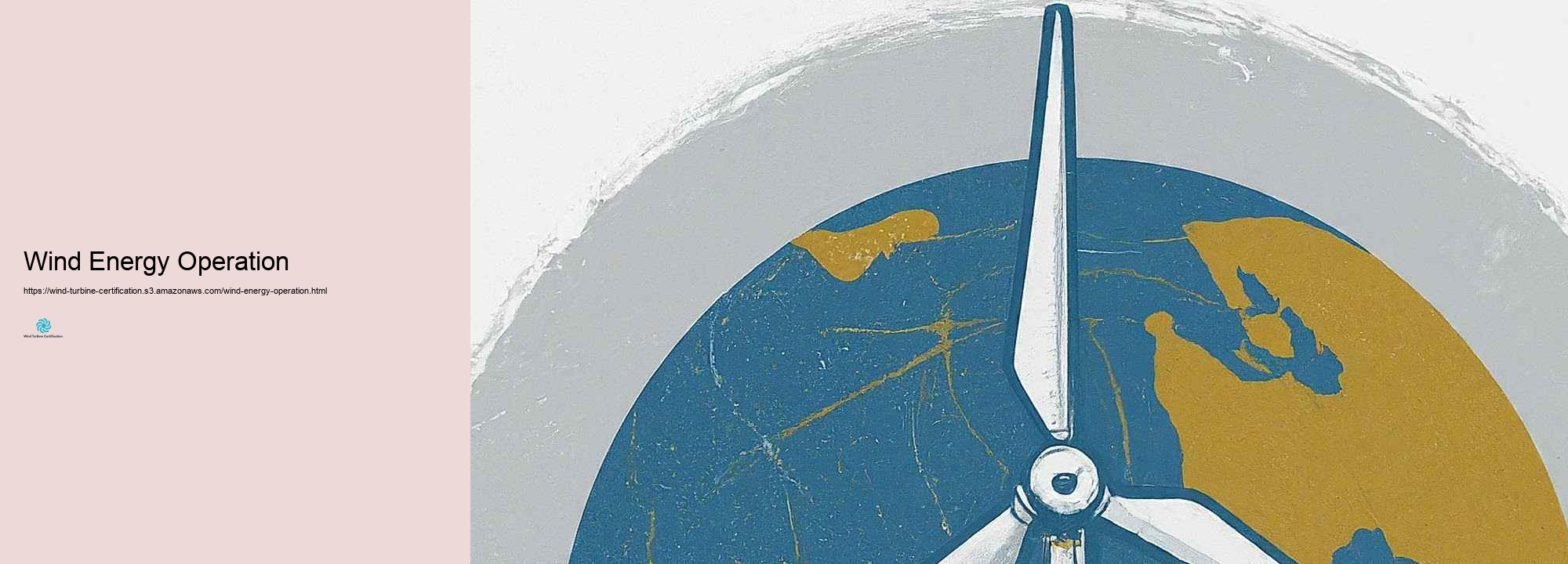
Wind Turbine Certification is a formal recognition that a technician or wind turbine system meets specific industry standards. It ensures safety, efficiency, and compliance with regulations, which is crucial for operating within the renewable energy sector.
Basic requirements include completing relevant training, gaining hands-on experience, and passing exams that test knowledge of wind turbine systems, safety protocols, and operational procedures.
The time required to become certified varies, typically ranging from a few months to over a year, depending on the program and the individual's prior experience.
Organizations such as the Global Wind Organisation (GWO), American Wind Energy Association (AWEA), and International Electrotechnical Commission (IEC) provide Wind Turbine Certification.
Obtaining Wind Turbine Certification enhances your credibility as a professional, opens up job opportunities in the wind energy sector, and ensures you are equipped to meet industry standards and safety requirements.